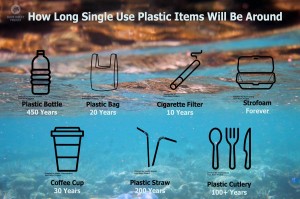 Eat Less Plastic — Microplastics are in Food & Water
Eat Less Plastic — Microplastics are in Food & Water
From an Article by Kevin Loria, Consumer Reports, June 2020 Issue, Volume 85, No. 6, pp. 26 – 35.
We are eating a nominal 5 grams of plastics each and every week!
The Nonplastic Path Forward for a Better World
If chemicals in plastic have been linked to all these health concerns, many people may ask why the FDA permits them to be used in food packaging.
Vandenberg says that’s because there are flaws in our regulatory system. We often don’t know which chemicals are being used because the FDA doesn’t require companies to release toxicological data on all chemicals that can transfer into food, according to a consensus statement published in March in the journal Environmental Health. “As new chemicals get put onto the market, we have to know that they’re there” before they can even be assessed for risk, Vandenberg says.
Yet perhaps the most fundamental problem, Trasande says, is that our federal agencies use a risk-assessment method that hasn’t been updated since the late 1950s. It measures the dangers of high doses of a chemical but doesn’t account for the fact that low doses may have different harmful effects. Those old methods are good for calculating what happens if you’re exposed to a high dose of a chemical, like “if you fall into a vat of it,” Vandenberg says. But as the statement in Environmental Health says, they don’t take into account what we’ve since learned about how low doses of a chemical over time can affect the endocrine system and disease risk.
“The agency’s safety reviews continue to be conducted based on long-standing academic standards and demonstrated principles of toxicological and chemical safety assessment,” says a spokesperson for the FDA.
As plastic production continues to rise, assessing whether our current system is protective enough has become more urgent than ever. Nearly 200 nonprofits have released a call to action, asking regulatory bodies around the globe—such as the FDA—to create a system that’s more transparent about the chemicals in packaging and that takes a more restrictive approach toward the sorts of chemicals allowed.
“Half of the plastic ever made was made in just the last 13 years,” says Judith Enck, the former EPA regional administrator. To reverse the trend will take concerted effort from many quarters, with people striving to use less plastic, companies committing to efforts that would truly improve reuse and recycling, and legislation that would eliminate most single-use plastics, such as shopping bags, for health and environmental reasons.
Enck supports Sen. Udall’s newly proposed Break Free From Plastic Pollution Act, which would phase out many single-use plastics, put a pause on the launch of new plastic production, and require sellers of plastic to cover the cost of collection and recycling.
“We have a fighting chance to stop this,” she says.
#########################
See also: Shelter-At-Home Project: Eliminate Single-Use Plastics With Durable Alternatives | CleanTechnica, Kyle Field, May 4, 2020
As the world continues to navigate this pandemic, it’s okay to give yourself a bit of slack versus the rules established for the world that was before. If supporting local business means using a few more take-out containers per month, that’s okay. We won’t make a habit of it that stretches on for years, but for today, it’s okay. The trade-off is worth it. Having said that, there are areas we can still optimize as we work through the first phase of this pandemic.
Target Zero Waste (Recycle!) & Find Alternatives
